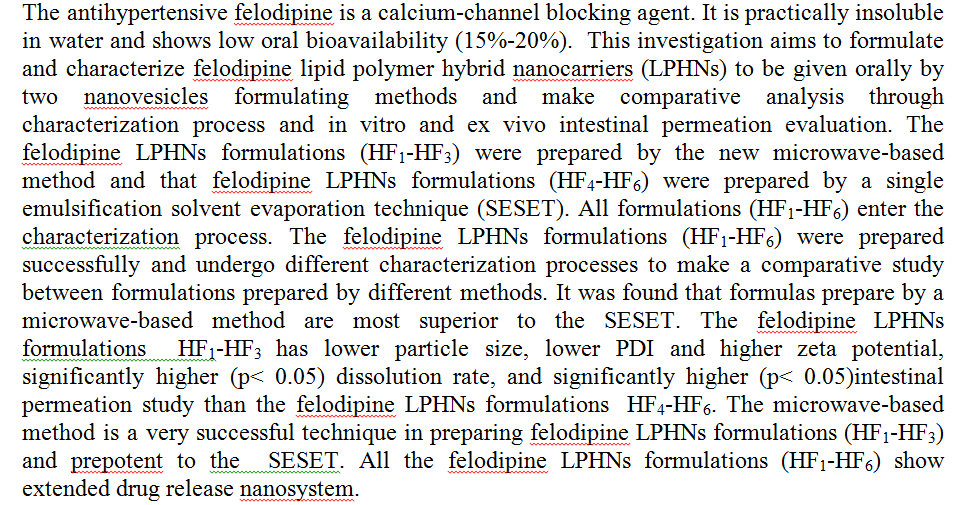Apical meristems, lateral buds, anthers of immature flowers and immature embryos of chickpea ( Cicer arietinum L.) were cultured on MS media with different growth regulators and incubated for 6 weeks at 25-27?C with 16 hrs photoperiod for callus initiation. Results indicated that 1 and 0.1 mg/l of 2,4-D and BA were suitable for callus initiation when apical meristems and lateral buds were used. While 2 and 0.5 mg/l of both growth regulators were essential for immature embryos. It was noticed that using chickpea anthers of the MS medium must contain 1mg/l 2ip and 0.5 mg/l IAA. However, MS medium supplemented with 1-3 mg/l of BA and 2,4-D respectively was good for callus initiation from lateral buds, anther and immature embryos.
... Show MoreIn this research, the performance of asphalt mixtures modified with polyethylene polymer (PE) by adding 2%, 4%, and 6% percentages was evaluated. Two kinds of PE are employed: Low-Density PE (LDPE) and High-Density PE (HDPE). The semi-wet mixing technique (SWM) was conducted to avoid stability issue for PE-modified binder during storage condition. Many experimental tests were conducted to evaluate the ability of these mixtures to withstand the effects of loads and moisture. The hardness index of these mixtures was also measured to determine their resistance to the effects of high temperatures without causing permanent deformations. The results showed that adding PE led to a remarkable enhancement in the performance of PE-modified mixtures.
... Show More (2)
(2)
This study investigates the ionic conduction dependence on the size of alkaline cations in gel polymer electrolytes based on double iodide can enhance by incorporating a salt having a bulky cation.
... Show More (2)
(2)
n this paper, we formulate three mathematical models using spline functions, such as linear, quadratic and cubic functions to approximate the mathematical model for incoming water to some dams. We will implement this model on dams of both rivers; dams on the Tigris are Mosul and Amara while dams on the Euphrates are Hadetha and Al-Hindya.
 (5)
(5)
 (6)
(6)
 (3)
(3)
Pulsatile drug delivery systems (PDDS) are developed to deliver drug according to circadian behavior of diseases. They deliver the drug at the right time, action and in the right amount, which provides more benefit than conventional dosages and increased patient compliance. The drug is released rapidly and completely as a pulse after a lag time. These systems are beneficial for drugs with chrono-pharmacological behavior, where nighttime dosing is required and for the drugs having a high first-pass effect and having specific site of absorption in the gastrointestinal tract. This article covers methods and marketed technologies that have been developed to achieve pulsatile delivery. Diseases wherein PDDS are promising include asthma, peptic u
... Show MoreA particulate polymer composite material was prepared by reinforcing with the Aluminum Oxide (Al2O3) or Aluminum (Al) metallic particles with a particle size of (30) µm to an unsaturated Polyester Resin with a weight fraction of (5%, 10%, 15%, 20%).
Tensile test results showed the maximum value of elastic modulus reached (2400MPa.) in the case of reinforcing with (Al) particles with weight fraction (20%) and (1500 MPa.) in the case of reinforcing with (Al2O3) particles of the same weight fraction.
When the impact and the flexural strength tests were done, the results showed that flexural strength (F.S), maximum shear stress (τmax), impact strength
... Show MoreFour electrodes were synthesized based on molecularly imprinted polymers (MIPs). Two MIPs were prepared by using the diclofenac sodium (DFS) as the template, 2-hydroxy ethyl metha acrylate(2-HEMA) and 2-vinyl pyridine(2-VP) as monomers as well as divinyl benzene and benzoyl peroxide as cross linker and initiator respectively. The same composition used for prepared non-imprinted polymers (NIPs) but without the template (diclofenac sodium). To prepared the membranes electrodes used different plasticizers in PVC matrix such as: tris(2-ethyl hexyl) phosphate (TEHP), tri butyl phosphate (TBP), bis(2-ethyl hexyl) adipate (BEHA) and tritolyl phosphate (TTP). The characteristics studied the slop, detection limit, life time and linearity range of DF
... Show More (11)
(11)
 (4)
(4)
 (2)
(2)
 (2)
(2)

